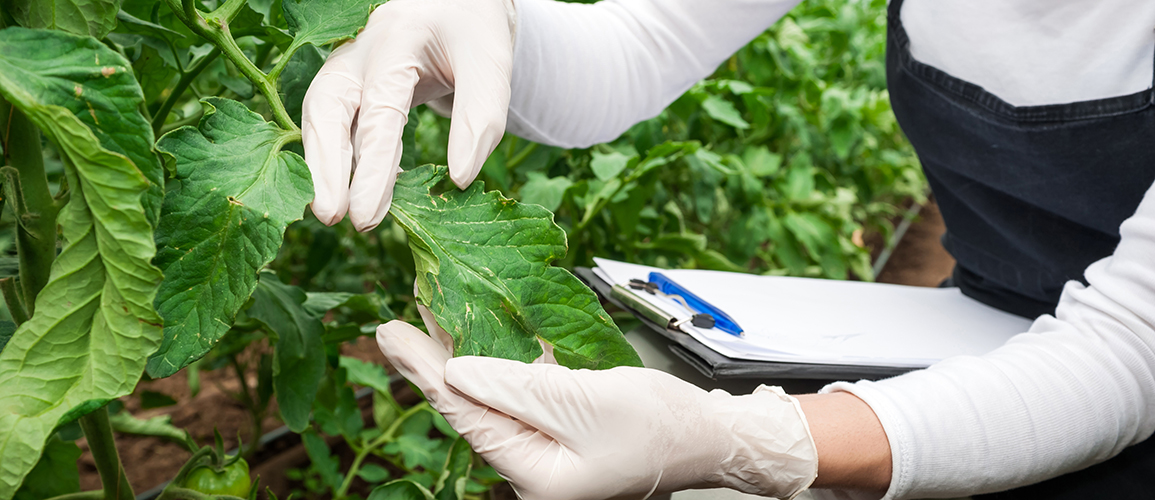E.E. Muir & Sons Brassica and Leafy Vegetables Agronomy and Sales Workshop in Werribee
On Tuesday 23 July 2019, AUSVEG Biosecurity Coordinator Callum Fletcher and AUSVEG Biosecurity Officer Madeleine Quirk were invited to speak about key exotic pests of brassica and leafy vegetables at the E.E Muir & Sons Brassica and Leafy Vegetables Agronomy and Sales Workshop in Werribee.
Callum’s presentation discussed the increasing risk to Australia’s vegetable industry from exotic plant pest threats, explaining why recent incursions of pests such as cucumber green mottle mosaic virus, varroa mite (jacobsonii), tomato potato psyllid, and vegetable leafminer, pose a threat to the industry. He also highlighted significant fresh produce pest interceptions from 1 January 2017 to 31 December 2018.
He continued on to discuss several high priority pests for brassicas and leafy vegetables, including cabbage looper (Trichoplusia ni), bean seed fly/bean seed maggot (Delia florilega), anthracnose (Collectotrichum higginsianum), root know nematode (Meloidogyne enterolobii, Meloidogyne mayaguensis), black bean aphid (Aphis fabae), and brown marorated stink bug (Halyomorpha halys).
Callum gave a more detailed explanation of BMSB, which tends to arrive at Australia’s ports in imported goods between September and April each year. This coincides with autumn and winter in the Northern Hemisphere. The bugs will commonly hitch a ride in shipping containers, vehicles and other imported goods entering Australia.
BMSB is a high priority exotic plant pest because it is known to feed on more than 300 host species and can cause significant problems for growers. BMSB is also a public nuisance: it produces a pungent odour when disturbed or crushed and, during winter, it will congregate inside man-made structures such as houses, vehicles, machinery and sheds. For more information on brown marmorated stink bug please visit the AUSVEG biosecurity webpage.
Maddy’s presentation focused on MT16004 RD&E Program for control, eradication and preparedness for vegetable leafminer (VLM), a strategic levy investment under the Hort Innovation Vegetable and Nursery Funds. VLM is a highly polyphagous pest of vegetables (including brassica and leafy vegetables), ornamentals and melons. Between 2008 and 2015, it was found ‘hopping’ down the Torres Strait Islands, and in 2015, it was detected in Seisia on mainland Australia. Project partners cesar, Plant Health Australia, University of Melbourne, the Department of Agriculture’s Northern Australia Quarantine Strategy and AUSVEG, developed a project in 2017 to prepare industry for the spread of VLM.
Maddy gave an update on project results, including the development of surveillance toolkits which will be available to industry at the end of the project, progress on chemical control options for VLM, and progress on biological control options. For more information on the vegetable leafminer project, visit the MT16004 project page.
AUSVEG would like to thank E.E. Muir & Sons for inviting Callum and Maddy to speak.

